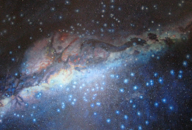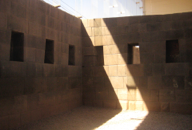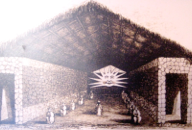qorikanCHA & SANTA DOMINGO
CUSCO, PERU, SOUTH AMERICA
JUNE 21, 2008


qorikanCHA & SANTA DOMINGO
CUSCO, PERU, SOUTH AMERICA
JUNE 21, 2008




Plaza Intipampa, also known as Plaza Santa Domingo, is the site of two impressive spiritual shrines. The first built on this place is Qorikancha, an Inca shrine meaning “golden enclosure”, which was built to honor the Sun God, Inti. An architectural rendering of this temple shows an enormous golden sun, suspended from the thatched roof. This was the richest of all Inca Temples, when Cusco was the capital of an extensive Inca Empire. At the height of the Inka civilization, these temple walls were gold plated, flecked with precious stones. Gold and silver full-scaled scaled statues of animals, trees, and corn were placed in a garden. The mummified remains of Inca nobility were housed in the temple, used in ceremonies. Once the Spanish conquered the Incas in 1532, all the riches of the temple were stripped. The church and convent of Santa Domingo were built on top of the Inca shrine. An earthquake destroyed most of the original church. At this point, the Inca ruins were discovered and preserved. Today, there is a true marriage of these two divergent cultures, both demonstrating respect for one another. Qorikancha, within Santa Domingo, is the site of the Inti Raymi celebrations, beginning their pageantry here in the inca ruins. The walls of the temple stand in evidence of the advanced and civilized culture of the Incas. A modern artist has completed two paintings which demonstrate the importance of Qorikancha. This place was the center point from which all seques, or lines radiated. The radiating seques connected spiritual places such as shrines, temples, and other sacred places (rocks, springs, caves, etc.) , all of which were venerated by the people of Cusco and were known as wakas. Qorikancha itself had 16 wakas in the form of squares, fountains, buildings, or sacred stones that were either within its walls or close to it. The Jesuit Bernabe Cobo, in this book The New World, written in 1653, describe 328 wakas connected with each other by 41 or 42 seques. Each line connected between 3 and 15 wakas. The seques were distributed among the Inca Empire: Chinchaysuyu, Antisuyu, Qollasuyu each had 9 seques; while Kunitsuyu province had 14 or 15 seques concentrated there. An anthropologist, Tom Zuidema, hypothesized that the seque system corresponded to the Inca calender, with each day of the year corresponding to one of the wakas. Offerings were made to the cult on the particular day it was rendered. Furthermore, Zuisdema presumed that these wakas were important sites for astronomical observations. In the painting by Cusco artist, Miguel Araoz Cartagena, the artist illustrates the scheme of the seques. Each of four colors represents one of the four provinces of the Inca Empire, with Qorikancha depicted as the radius point in the center. The numbers of wakas and seques correspond to the research carried out by the Jesuit, Bernard Cobo and illustrates the possibility of the 1970’s based hypothesis of Tom Zuisdema. A second painting, also by Cartagena, is meant to illustrate the astronomical belief system of the Ancient Incas. The heavens are viewed as negative space forming shapes, rather than our western stars, or positive points forming outlines of figures (such as Orion). In the summer months of July and August, the Milky Way (called “mayu” or celestial river) shows itself clearly over Cusco. The heavens are revealed as dark spots over the light ground of the “mayu”. These dark spots are called “yana phuyu” or black clouds. The artist has rendered this idea on canvas depicting the serpent, the toad, the partridge and a llama. The two shining eyes of the llama are represented by the stars Alpha and Beta Centuri. The locals believed that all the animals and birds had their likeness in the sky, whose responsibility was the procreation and augmentation of their species.
PHOTOS: Left Column: 1. Interior courtyard, Santa Domingo. 2. Loggia, Santa Domingo. 3. Remains of Qorikancha, the Inca temple. 4. Architectural rendering of Qorikancha at its peak. Center, Top: The doors of Santo Domingo church and convent. Center, Bottom: An Inca wall within the church of Santa Domingo. Right Column: 1. The single bell tower of Santa Domingo. 2. The cloister of Santa Domingo. 3. Painting by Miguel Araoz Cartagena illustrating the waka/seques theory. 4. Painting by Cusco artist Miguel Araoz Cartagena illustrating the Inca astronomical vision of the Milky Way.


Two Cultures, Side by Side






